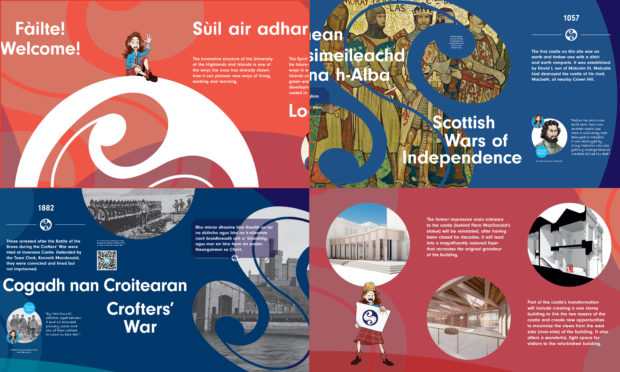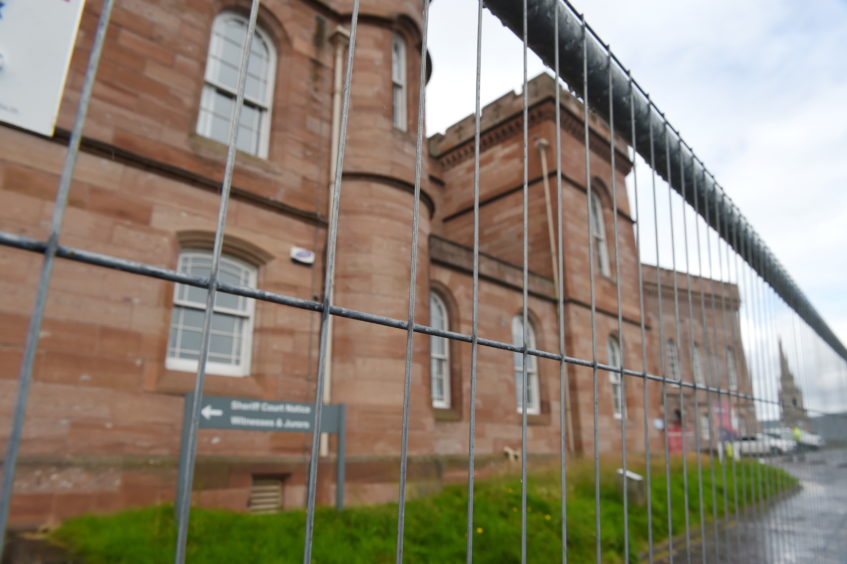Designs for the artwork to cover the hoardings that will screen Inverness Castle during its four year transformation have been unveiled by Highland Council.
Using drawings, photographs and text, including some in Gaelic, they tell the story of Castle Hill from the time of the last Ice Age to the present day.
They also detail the plans for the conversion of the former courthouse and prison into a modern visitor attraction.
Characters making an appearance include St Columba, Robert the Bruce, Mary Queen of Scots and Flora MacDonald.
They highlight the role of Inverness in Scotland’s history through the centuries.
The content for the design was developed through a collaboration between High Life Highland’s archive service and UHI Centre for History, bringing their wealth of knowledge and images together to create the story of the castle’s site.
Contributions also came from a range of other organisations including Glasgow University, Highlands and Islands Enterprise, Historic Environment Scotland, LDN Architects, Liverpool John Moores University, National Galleries of Scotland, NatWest Group Archives, Scottish Natural Heritage, The National Library of Scotland and VisitScotland.
The eight-foot-high hoardings, along with CCTV camera poles, will indicate the area of the castle which is to become a building site for the transformation project, turning the castle and its surroundings into an attraction the council hopes will become a gateway for Highland tourism.
The council says the project, known as “Inverness Castle – Spirit of the Highlands”, will provide much needed investment and re-energise the tourism industry across the area as recovery from the effects of the Covid-19 pandemic get underway.
It is supported by Scottish Government investment of £15 million through the UK and Scottish Government funded £315 million city-region deal.
A council spokesman said: “The project will support economic growth throughout the Highland area, creating a sustainable, viable and ‘must-see’ attraction that will celebrate the spirit of the Highlands.”
The entire site is now owned by Highland Council following the completion of the purchase of the South Tower last week.
The next significant step for the project will be the award of a tender for a contractor to carry out initial demolition work, asbestos surveys, timber preservation surveys and structural checks, called an ‘enabling works contract’.
Work will begin when lock-down guidelines allow.
The hoarding designs can be viewed on the Highland Council website.

